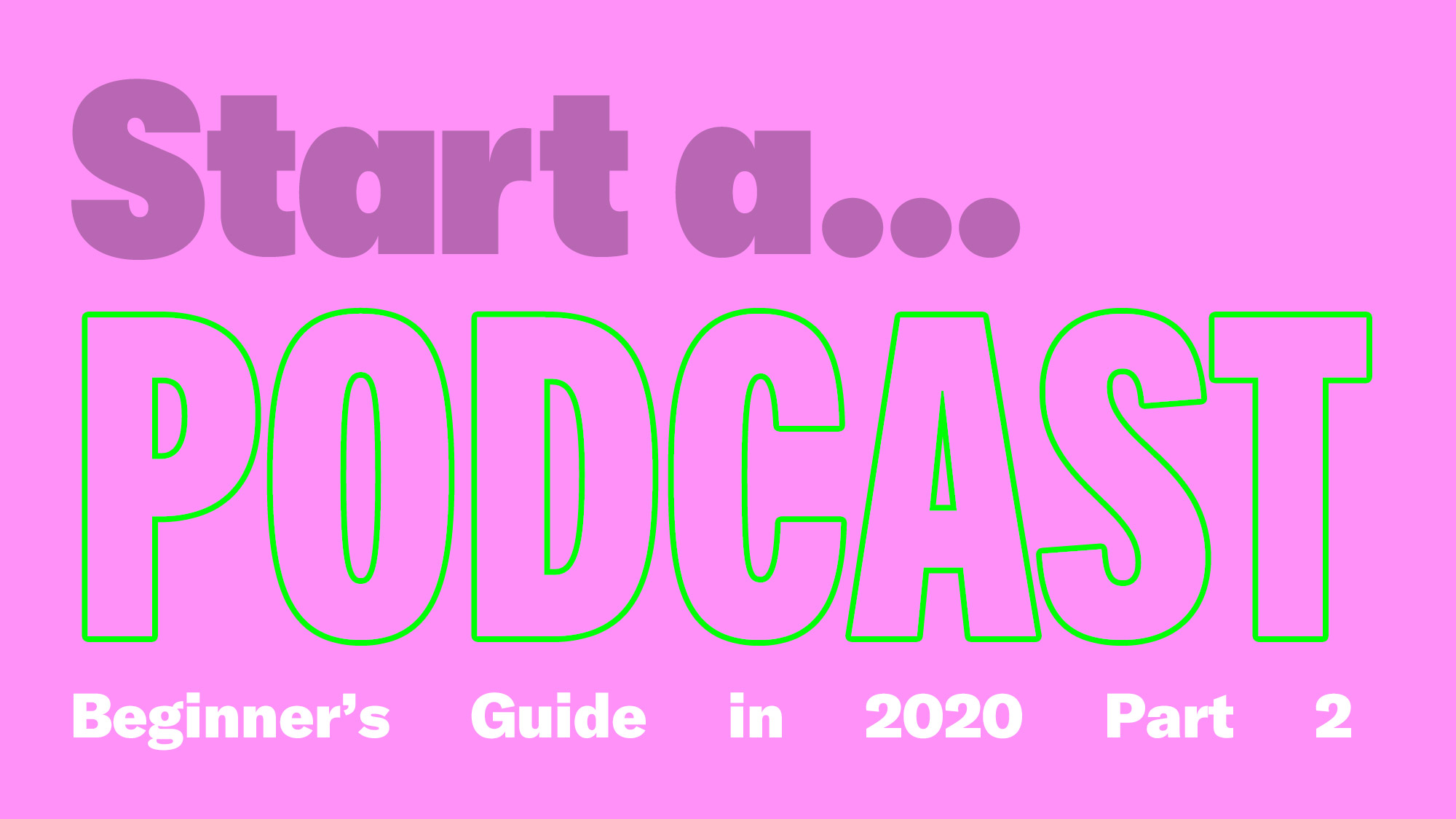So after reading Part 1 of How to Start A Podcast As A Beginner, you're probably asking yourself when will I get to the part about buying the gear. If you didn't read part one then I would suggest going back and clicking here to read that.
In part 2 we’ll cover what gear to purchase, developing your show format and all things planning your guests.
What Podcast Gear to Use
Purchasing podcasting equipment can be a little scary. It definitely took me awhile to understand all the different types of microphones, cables, audio interfaces that you may need when starting a podcast. Luckily I have a friend in the audio industry that is able to help me when I need to ask questions and learn more about the gear.
We recently chatted and put together a beginner's buyer guide To starting a podcast. This guide includes all the equipment any beginner should purchase without breaking the bank while also maintaining a high quality of sound. For this setup you will need a laptop running either garageband or audacity. After you have that you will want to purchase the Audio Technica ATR-2100 USB dynamic microphone, Focusrite Scarlett 2i2 audio interface, and two windscreens. That's it.
This is a really simple setup that allows you to have your hands free and have a very comfortable conversation with either a guest or amongst yourself. The audio interface would plug directly into your laptop to make sure you have a high quality of sound. From there you would need to set up your audio software such as Audacity or GarageBand to record each time. This is not my current setup that I use for my podcast but if I was starting from day one tomorrow this is what I would purchase.
Developing Your Podcast Show Format
This is probably one of the most important things about starting a podcast. I've mentioned in the video above that some of the podcast that I've listened to before tend to talk in circles and that immediately makes me want to switch off when I’m listening. I personally like listening to podcast that start at point A and work their way towards point B.
So for my podcast I wanted to make sure that I knew a little bit of background on my guests as well as have some questions on hand to ask them to continue the conversation. With this in mind I knew that I wanted to start each episode at an early stage of my guest’s past. Either their childhood or the moment they realized they enjoyed being creative. Because most of my guests are Professionals in the creative industry that I admire, I knew that I would want to understand what led them to where they are today.
This was the general idea for the format of my podcast. Once you have this skeleton of a show format you can begin to fill in the spaces or parts of the conversation with lighter questions about your guests personality or their preferences in food. This helps keep things interesting each episode so it doesn't sound robotic.
Planning, Scheduling and Contacting Your Podcast Guests
Planning, scheduling and contacting your guests for your podcast might be one of the hardest things in this whole process. When you start a podcast as a beginner realistically no one knows who you are and no one knows about your idea. this can be a super hard speed bump to get over and the way that I did that was to put together a formal podcast one sheet. This one sheet was something that I've seen while working in the marketing and advertising industry and thought that it would help when starting a podcast as a beginner.
My podcast one sheet included a few things that I think can really help your potential guests understand your idea. The first thing I included was a summary about the podcast and my reasoning for starting it. “Wellfed was started to answer some of the burning questions I had as a younger designer going through the creative industry.”
The second on my podcast one sheet was a section about how I would publish the podcast and where it would live. Being a designer in the creative industry I knew that I could build a website that looked different than most which is something I used to my advantage. I also talked about some of the social media pages and our following at the time. Albeit, I probably didn't have more than 200 to 300 followers combined between instagram, pinterest, and facebook but it was still good to show motivation.
The third and final thing that I made sure to include on my one sheet was a publishing schedule for the podcast. Now this can be a little tough but it really helps out in the beginning. If you can give yourself an idea of how many times a week or per month you want to publish your podcast you will have a better understanding of how much work each episode will take. I decided to include this on my one sheet because it helped guests understand that there was a clear goal that I wanted to achieve by the end of my first season. It also help them understand that they would be part of a larger community.
Conclusion
I hope this helps any beginners looking to start their own podcast. If you have any questions feel free to tweet or DM me on Instagram. You can also sign up for our mailing list here. On the mailing list you can email me with any questions you may have.
